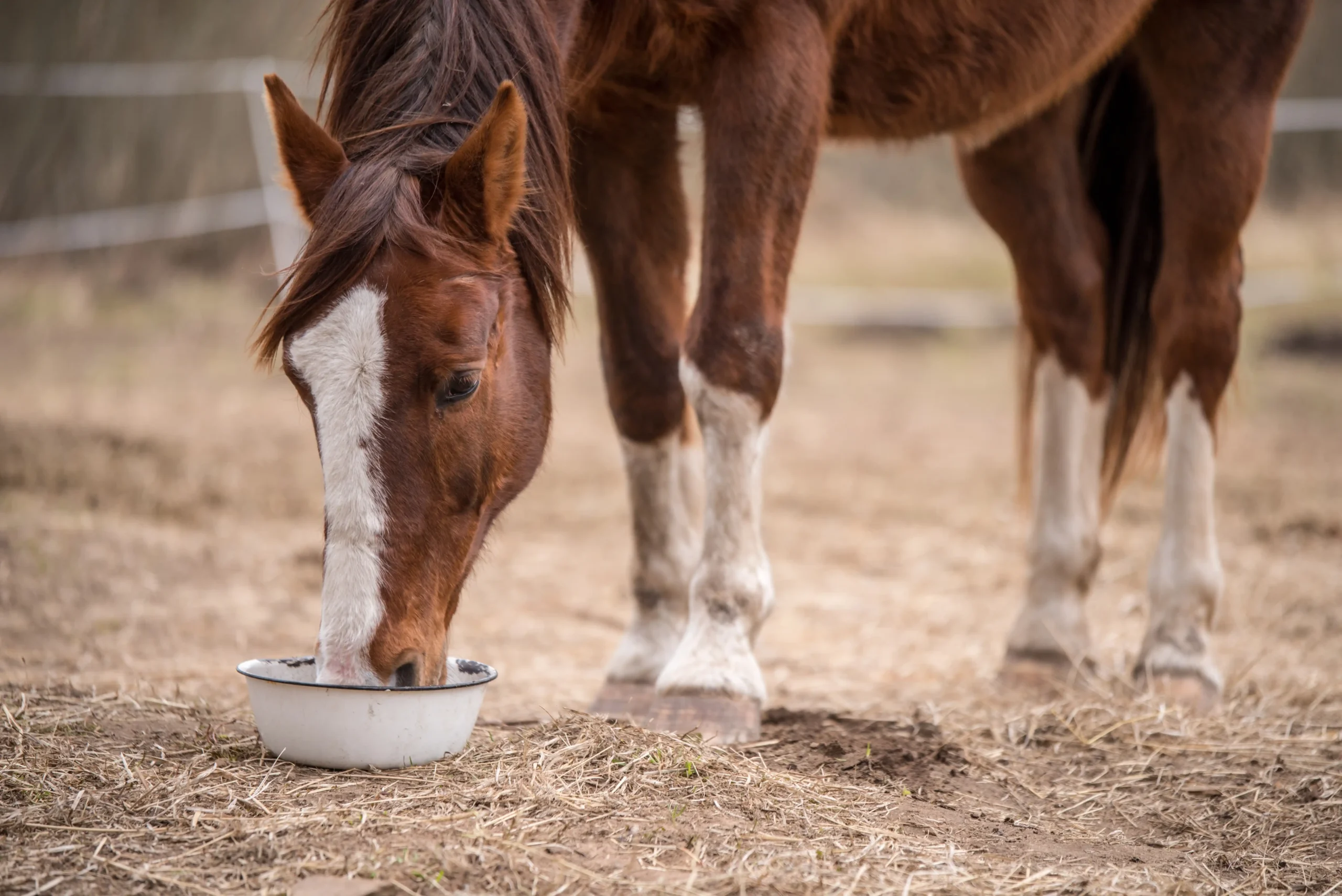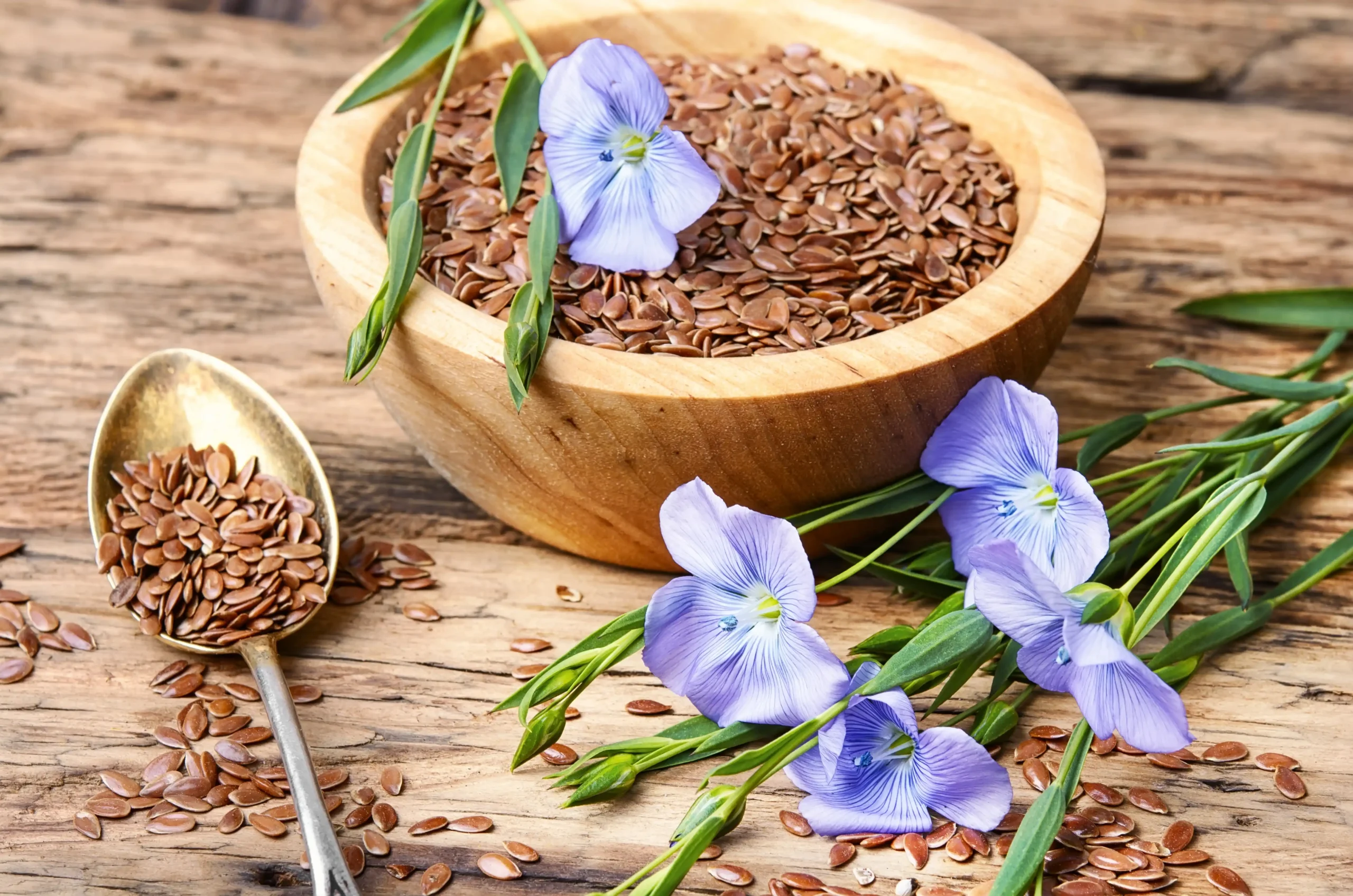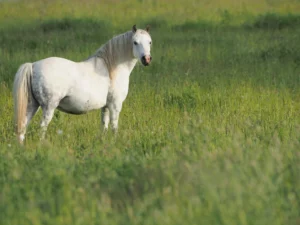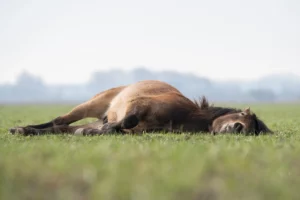Key Points at a Glance
- Linseed is a very tasty and valuable feed for horses
- Linseed is an important source of Omega-3 fatty acids
- Golden linseed is not better than the common brown linseed
- Linseed mucilage helps with gastric ulcers
- Linseed oil is not as healthy for horses as its reputation suggests
Linseed: A Versatile Natural Product
Linseed products are highly popular, both in horse feeding and human nutrition. In every equestrian and feed store, you can find linseed products in the form of linseed oil, linseed cake, mash, supplementary feeds, or treats. Many horses find linseed particularly palatable – but is it always as healthy as it seems? In this article, we take a closer look.
The History and Nutritional Value of Linseed
Linseed, also known as flax or common flax (scientific name: Linum usitatissimum), has been cultivated and used in various ways for over 10,000 years. Originally native to the eastern Mediterranean region, it has spread across the world over the centuries.
The linseeds obtained from the plant are highly nutritious due to their high fat and protein content. Particularly noteworthy is their rich supply of Omega-3 fatty acids, especially the anti-inflammatory alpha-linolenic acid, which makes up about 50% of the fat content. Omega-3 fatty acids support healthy inflammation regulation, strengthen the immune system, and promote skin and coat health. The fibre and mucilage found in linseed help protect the mucous membranes of the stomach and intestines while supporting regulated digestion.
The Proper Use of Linseed in Horse Feeding
To take full advantage of the beneficial properties of linseed in horse feeding, it needs to be processed beforehand. This means it should either be boiled, soaked in hot water, or crushed.
Crushing linseed is ideal if you want to provide your horse with a high-quality source of protein and fatty acids. This process ensures that the nutrients are optimally absorbed rather than passing through undigested and ending up in the manure.
Caution: Due to its high fat content, crushed linseed turns rancid quickly, so it should always be freshly crushed before feeding. Buying pre-crushed linseed is less advisable, as it loses quality during storage and is often treated with antioxidants.
Freshly Crushed Linseed: A Practical Tip
A small electric coffee grinder makes it easy to crush linseed fresh before feeding. Giving freshly crushed linseed in alternating cycles with other oilseeds, such as OKAPI Wild seeds, has also proven beneficial in supporting coat changes and addressing skin and coat issues.
Caution with Gastric Ulcer: If a horse suffers from acute gastritis or gastric ulcers, linseed should not be fed in its crushed form. The sharp-edged fragments could further irritate the already inflamed stomach lining. In such cases, linseed mucilage from boiled linseed is the better option.
Boiled Linseed: A Soothing Remedy for the Stomach
Linseed has an exceptional property that makes it particularly valuable in horse feeding: when it comes into contact with water, it forms a mucilage. These mucilaginous substances create a protective layer in the digestive tract, shielding the sensitive mucous membranes from irritation and supporting the intestine’s natural peristalsis. Linseed mucilage is especially beneficial for horses with sensitive stomachs, gastric ulcers, or a tendency to colic, making it a valuable dietary addition.

© Adobe Stock / zanna_
How to Prepare Linseed Mucilage
To make linseed mucilage, boil 80–100 g of linseed with approximately two to three times the amount of water on low heat for 10–15 minutes.
The consistency of the mucilage can be adjusted according to the horse’s preference—some horses prefer a thicker texture, while others like it more liquid. A good rule of thumb is that when stirring with a spoon and lifting it, the mucilage should form a pencil-thick strand as it drips off. Once ready, the mucilage can be transferred into a thermos flask or insulated cup and taken to the stable. It should be fed lukewarm, for example, as a topping on a base of soaked hay cobs or sainfoin pellets in the horse’s feed bowl.
Practical Tip: Linseed mucilage can be prepared a few hours in advance and stored in a cool place. Before feeding, it can be brought back to the optimal feeding temperature by adding warm water.
However, it should not be stored for more than a day, as harmful microorganisms can develop. Since the mucilage may interfere with the absorption of medications or supplements, it is recommended to leave a 2–3 hour gap between feeding linseed mucilage and administering these substances.
Alternatively, linseed can be soaked in hot water and left to swell for approximately 15 minutes. However, the mucilage formation will not be as pronounced as when cooked on the stove.
What You Should Know About Hydrogen Cyanide Content
Like many natural feed ingredients, linseed also has some less desirable properties. In this case, it is the high hydrogen cyanide content. More specifically, linseed contains cyanogenic glycoside precursors of hydrogen cyanide—linustatin and neolinustatin—which are converted into toxic compounds by the enzyme linase.
Boiling linseed inactivates linase, thereby preventing the formation of hydrogen cyanide and eliminating any associated risks. If feeding crushed linseed, there is no need for concern as long as the daily intake remains below 100 g for an adult horse—this amount is considered completely safe.
Golden or Brown Linseed?
There are an estimated 180–200 different flax varieties. Golden linseed is often marketed as a better alternative due to its supposedly lower hydrogen cyanide content compared to brown linseed. However, the actual levels vary depending on the cultivated variety and growing conditions. In reality, the hydrogen cyanide content in brown and golden linseed is usually very similar. Both types are safe for adult horses in daily amounts of up to 100 g. So, the colour does not make a significant difference in terms of use, despite the price variations between the two.
Is Linseed Oil Really a Healthy Alternative?
Feeding linseed oil is common in many stables and is often considered a healthy option. However, it also has some drawbacks:
- Linseed oil is highly sensitive and oxidises quickly. It should be stored in a cool, dark place and used promptly after opening to avoid rancidity, as spoiled oils can be harmful to horses.
- Due to its tendency to become rancid, it is often treated with preservatives that do not have to be declared on the label.
- Adding oil to a horse’s diet can disrupt digestion. Since horses do not have a gallbladder, they struggle to process large amounts of fat. If linseed oil is fed at all, it should only be given in very small quantities (1 teaspoon per feeding).
Further Reading on Oil Feeding and Its Effects on Metabolism
Oil Feeding – What’s the Truth?, Oil Feeding Is Unhealthy! What do the facts say?
And in our video: Oil Feeding – Sensible or Not?
Because of these factors, feeding (freshly!) crushed linseed is far superior to linseed oil when looking to provide a valuable source of protein and fat that the horse can efficiently metabolise.
The same applies to linseed cake and linseed extraction meal, which are by-products of linseed oil production. These must be treated with antioxidants immediately after processing, as the exposed fatty acids would otherwise turn rancid within hours.
Conclusion: Using Linseed Correctly
Linseed—in the form of freshly crushed, boiled, or soaked seeds—is a valuable addition to a horse’s diet, offering numerous health benefits. Its properties can support digestion, strengthen skin and coat, provide energy, and have anti-inflammatory effects.
However, several key aspects must be considered: proper preparation, dosage, and storage are essential to fully harness linseed’s benefits while avoiding potential risks. When used correctly, linseed can significantly contribute to a horse’s well-being and performance in the long term.
- Linseed in Horse Feeding - 28. January 2025
- Organic Selenium and the “Rebound Effect”: Risks of Supplementing Selenium - 15. November 2024
- West Nile virus infections in horses - 10. September 2024





